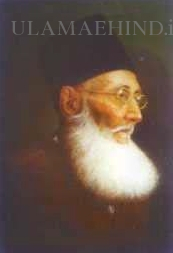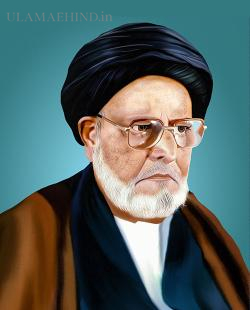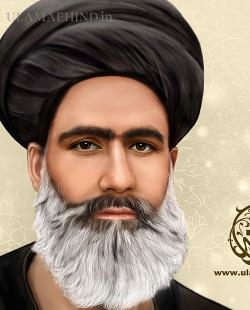It was in the year 1862 CE that a South Indian scholar by the name of Mulla Qadir Husein first came to Mumbai and established a madrassa, but soon left to go to Karbala. Upon a request by Ayatullah Mazandarani, during a chance visit of Haji Dewji Jamal, he once again came to Mumbai in 1872 CE to re-establish his madrassa.
Thus began early teachings of the school of Ahlul Bait [AS] amongst the Khojas, in the area known as Dongri today. It was not easy to practice the faith in those days, let alone preach. Mulla Qadir Husain had been threatened with his life and ultimately three people had to give their lives as a price for the Khojas accepting the Ja’fri faith. Yet this persistent mubaligh, against all odds, carried his mission with persistence and tenacity.
Such an illustrious teacher attracted a few brave students and amongst the most active and erudite was a boy called Gulamali. His father’s name was Ismail bhai and his mother’s name was Janbai. Originally from a small place in Gujarat, called Shihor, his father and grandfather had established a thriving business in handloom cloth and leather in Mumbai. It was here in Mumbai that Allah blessed a son to Ismail bhai and Janbai on 28th Safar 1297 (CE 1864), whom the Khoja Community today reveres as the Hilli of Gujarat, popularly known as Haji Naji.
It is said that this little boy so adored his teacher Mulla Qadir, that whenever he saw that the teacher was about to go out, he would rush to bring him his shoes. Touched by this act Mulla Qadir once observed: “Today you lift up my shoes, a day will come will people will raise you in honour".
Following a trip for Ziarah with his parents in 1300 AH the young Gulamali served as Imame Jumua in Malegaon, Maharashtra for about a year. During that time he accompanied some scholars to visit Mahuva. Upon observing the pitiful religious state of the Community there, he decided to make Gujarat his permanent home and thus began the most formative religious period of Khoja History. In addition to his speeches and majalis he began the foundational work of writing Guajarati religious literature with the establishment of Rahe-Najaat a monthly magazine in 1310 AH, which truly serves as Rahe Najat (path to salvation) today over a hundred years later.
It is well-known that the impact of this magazine went far beyond Gujarat and was a major influence upon the emerging Khoja Shia IthnaAsheri Community in Africa, Muscat, Burma and elsewhere where the Khojas had migrated. Gifted with persuasive oratory and a lucid pen, his sermons and words were simple but touched hearts of men. Through the columns of Rahe-Najaat, and the hundreds of books he wrote and published in Gujarati, his words have transcended generations as much as oceans.
In addition to towns and villages of Kutch and Kathiawad, his Dua no Majmuo and Gujarati tafseer of the Quran are still read in Africa, Europe and North America. Just as his 'Majmuo' runs parallel in importance to Mafatihul Jinan, in many Khoja homes, his book Mi’raju Sa'adah (Gujarati translation of the book of Mullah Ahmed Naraqi with the same name) is thought to have had major impact in the lives of many of our brethren in India and East Africa at the time. Having avidly read the book in my youth, I can very much relate to that. Even today, his books has many readers in UK, Europe USA, and Canada.
His personal life was truly an illustration of the faith and practice. It was in the year 1351 AH that his printing press caught fire in the middle of the night and his life’s work with many manuscripts were destroyed in flames, not to mention the loss of some 50,000 Rupees, a colossal amount in those days. As the neighbours and well wishers who gathered to console him, he calmly responded through the words of the hadith of the Prophet:
"After every forty days a momin is tested".
To crown his sincerity and erudition, this luminary emerging form the nascent Khoja Shia IthnAsheri Community, Allamah Haji Naji, also had unique qualities of leadership, with a clear vision and goal. It would not be an overstatement to record that his was amongst the first and perhaps the foremost contribution for the preservation and promotion of the Shia IthnaAsheri faith in the Khoja Society in its early days when the Community needed it most. As we commemorate his death anniversary this 8th of Zilhajj, it is worth remembering that had it not been for his persistence and tenacity, the vibrant KSI Community, spread around the world, may not be what it is today. That is the debt of gratitude we are obliged to pay back by drawing inspiration from this notable figure in our history and continue his legacy.













.png)



















